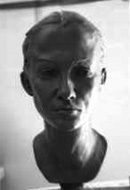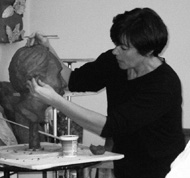Think About It
Faces are just about the first thing we zero in on as babies. Our brains develop the way they do while discovering the human face. That’s why human expressions are more familiar to us then any product logo in the world, and yet when we try to sculpt some of those expressions, we find that we haven’t been looking closely at all.
Are you ready to take that closer look? Then go ahead, get in touch with Tone Orvik. She knows how to look closely at faces. And she can teach you how to do it too. In addition to creating her own fabulous portraits, Tone can teach you how to sculpt a portrait in clay. One of her workshops coming up this fall.
November 5 & 6, 12 & 13
Each workshop is a full 4 days, over two weekends, from 10am to 4pm. Working with a live model, and having a maximum of 7 students, will give you that gold in the hands-on, individual instruction that will have you making your own portraits.
Come to Indianola -a small community of artists by the Sound on the Kitsap Peninsula. From the north you can take the Edmonds-Kingston ferry, driving south to Indianola in 15 minutes. Coming from the south, take the Seattle ferry to Bainbridge Island and drive north for about 30 minutes.
How much will this intensely human experience cost you?
The cost for either of the two 4 day workshops is $325. Class members will also share the model fee.
So, how do I get in touch with Tone?
For all the detailed information you could want, you may call Tone at: 360.710.0199 or you can send her an email at This email address is being protected from spambots. You need JavaScript enabled to view it..

You want more?
Later in the year, Tone will offer smaller workshops in more specialized skills including:
1. Hollowing out a clay sculpture and putting it back together, including drying and firing.
2. Basic mold making using a rubber mold and plaster shell.
3. Making replicas: press molds in clay, simple plaster casts, discussion of other sculptural media.
4. Painting your fired sculptures.
5. Bases and basing (taught by Ken Lundemo).
